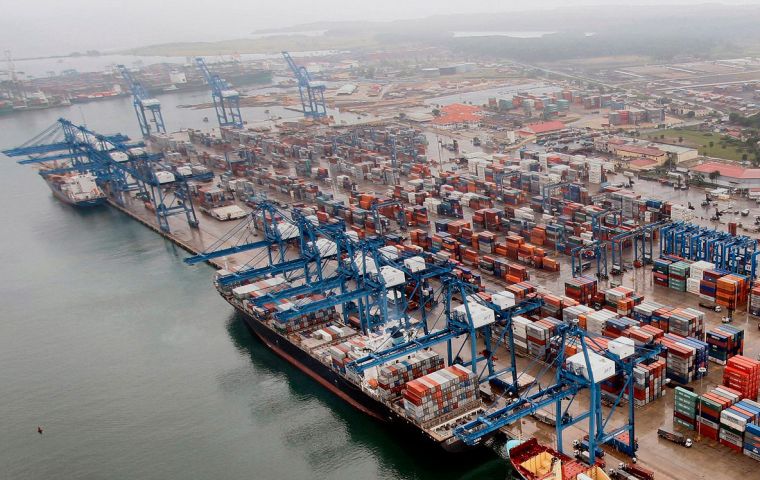MercoPress. South Atlantic News Agency
Lula da Silva administration to decide on Port of Santos internal spaces bidding processes
 One of the areas focuses is moving containers, located in the Saboó region, and the other focuses on fertilizer operations, based in Outerinhos.
One of the areas focuses is moving containers, located in the Saboó region, and the other focuses on fertilizer operations, based in Outerinhos. The bidding processes of areas within the Port of Santos in Brazil (the largest terminal in South America) was delayed until next year, since it will be up to the new government to define how they will unfold. One of the areas focuses is moving containers, located in the Saboó region, and the other focuses on fertilizer operations, based in Outerinhos.
According to the Ministry of Infrastructure, the topic will be further discussed by the personnel in charge of the transition team between the management of Jair Bolsonaro and president-elect Lula da Silva. However, there are still no answers as to whether the bidding will continue as planned or follow the same fate as the privatization of the Santos Port Authority, which will be reassessed.
The preparation for the bidding has been ongoing for some years. Finally, in October, the National Waterway Transportation Agency (Antaq) approved the documents for auction off the area known as STS10. The port area in Saboó is the Federal Government’s bet to increase container capacity at the Santos-based terminal.
On that note, the terminal structure to be built there will occupy 601,101 square meters. In the past, the area was divided between Rodrimar, Deicmar, and part of Ecoporto Santos terminals.
As of the sixth contractual year, the future facility’s capacity is estimated at 2.2 million TEU per year. The forecast is to reach 2.4 million TEU per year from the 11th year of the concession.
Investments total R$ 2.7 billion. Currently the Port of Santos has a cargo handling capacity of 5.3 million TEU in its existing terminals. Last year, 4.8 million TEU either entered or left Brazil through Santos. It is precisely this volume that makes the implementation of a new container terminal necessary.
There was controversy over the participation of companies in the auction. Antaq authorized competition from vertical companies but included contractual clauses to prevent possible anti-competitive practices.
“The formation of a consortium between shipping companies from different economic groups that hold ownership of currently-operating port facilities dedicated to the movement and storage of containers and general cargo in the port complex of Santos will not be admitted. This restriction applies to controlled companies, parent companies, affiliates, and entities subject to the same common control,” highlighted the regulatory agency.
Fertilizers. The STS53, located in the Outeirinhos region, is controversial and divides opinions. According to the Brazilian government’s projections, the area will be dedicated to moving and storing bulk mineral cargo, receiving up to BRL 650 million.
According to the Ministry of Infrastructure, the STS53 area comprises two different land plots, one next to the wharf and another at the retro storage area. The new terminal’s implementation will be done in two stages. Cargo throughput should reach 5.1 million tonnes a year after the final implementation stage, totaling 87,981 square meters.
The lot is located in a region intended for the movement of solid mineral bulk, according to the Port of Santos’ Development and Zoning Plan (PDZ). However, some fear that Giusfredo Santini Passenger Terminal, managed by Concais, will suffer from the STS53 presence as the use of equipment will make it unfeasible for cruise ships to berth in the region. The Federal Government disputes the claim.




Top Comments
Disclaimer & comment rules-

Read all commentsThere are things that belong to Sovereignty. Ports and Airports must remain in the hands of the State. Ever!
Dec 24th, 2022 - 01:42 pm 0https://www.youtube.com/watch?v=hWnKUaZuPCQ&list=FLmXPTu1f8AdGlizWNiASx2A&index=2
Commenting for this story is now closed.
If you have a Facebook account, become a fan and comment on our Facebook Page!